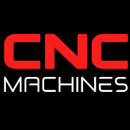The Evolution of Fabrication Software: From CAM to Industry 4.0

The Evolution of Fabrication Software: From CAM to Industry 4.0
The Emergence of CAM Software
Early Days of CAM (1960s-1980s)
The origins of fabrication software can be traced back to the development of CAM systems in the 1960s and 1970s. These early software solutions allowed manufacturers to automate the process of controlling machine tools.
- Key Features: Initial CAM systems focused on generating tool paths for CNC machines, translating CAD designs into machine-readable instructions.
- Limitations: Early CAM software was often limited in functionality and required significant manual input, making it less efficient for complex machining operations.
Impact on Manufacturing
- Increased Efficiency: CAM software began to streamline manufacturing processes, reducing the time required to produce components and minimizing human error.
- Greater Precision: The automation of tool paths improved accuracy, leading to higher quality products and tighter tolerances.
Advancements in CAD/CAM Integration
The 1990s: Integrating CAD and CAM
As CAD (Computer-Aided Design) software evolved, the integration of CAD and CAM systems became a significant milestone in fabrication software development.
- Seamless Workflows: This integration allowed designers to create detailed 3D models and generate machining instructions automatically, streamlining the transition from design to production.
- Enhanced User Interfaces: User-friendly interfaces and improved graphics made it easier for operators to visualize designs and manipulate tool paths.
Benefits of Integration
- Reduced Lead Times: The seamless flow of information between design and manufacturing reduced lead times for production.
- Increased Flexibility: Manufacturers could quickly adapt to design changes and produce custom components without extensive reprogramming.
The Rise of Smart Manufacturing
Introduction of Industry 4.0 (2010s)
The concept of Industry 4.0 marked a new era in manufacturing, characterized by the integration of advanced technologies such as the Internet of Things (IoT), artificial intelligence (AI), and big data analytics.
- Connected Systems: Fabrication software evolved to connect machines, sensors, and software platforms, enabling real-time data exchange and decision-making.
- Predictive Analytics: Advanced algorithms began to analyze production data, allowing manufacturers to predict equipment failures and optimize maintenance schedules.
Impact on Fabrication Software
- Enhanced Data Utilization: The integration of IoT and big data allowed manufacturers to collect and analyze vast amounts of data, leading to more informed decision-making and improved operational efficiency.
- Adaptive Manufacturing: Fabrication software began to support adaptive manufacturing processes, enabling real-time adjustments to production based on changing conditions.
The Future of Fabrication Software
Advanced Robotics and Automation
As fabrication software continues to evolve, the integration of advanced robotics and automation will play a crucial role in shaping the future of manufacturing.
- Collaborative Robots (Cobots): The use of cobots alongside traditional machines will enhance productivity and flexibility, allowing for seamless human-robot collaboration.
- Smart Automation Systems: Future fabrication software will incorporate AI-driven automation systems that can learn and adapt to optimize production processes continuously.
Sustainable Manufacturing Practices
The focus on sustainability will drive the development of fabrication software that prioritizes eco-friendly practices.
- Resource Optimization: Advanced software will enable manufacturers to optimize material usage and minimize waste, contributing to a more sustainable manufacturing environment.
- Lifecycle Analysis: Fabrication software will increasingly incorporate lifecycle analysis tools, allowing companies to evaluate the environmental impact of their products throughout their lifecycle.
Enhanced User Experience
- Intuitive Interfaces: As technology becomes more advanced, the demand for user-friendly interfaces will grow, making it easier for operators to interact with complex systems.
- Training and Support: Software developers will invest in training and support tools that facilitate the onboarding of new users and enhance their understanding of advanced features.


